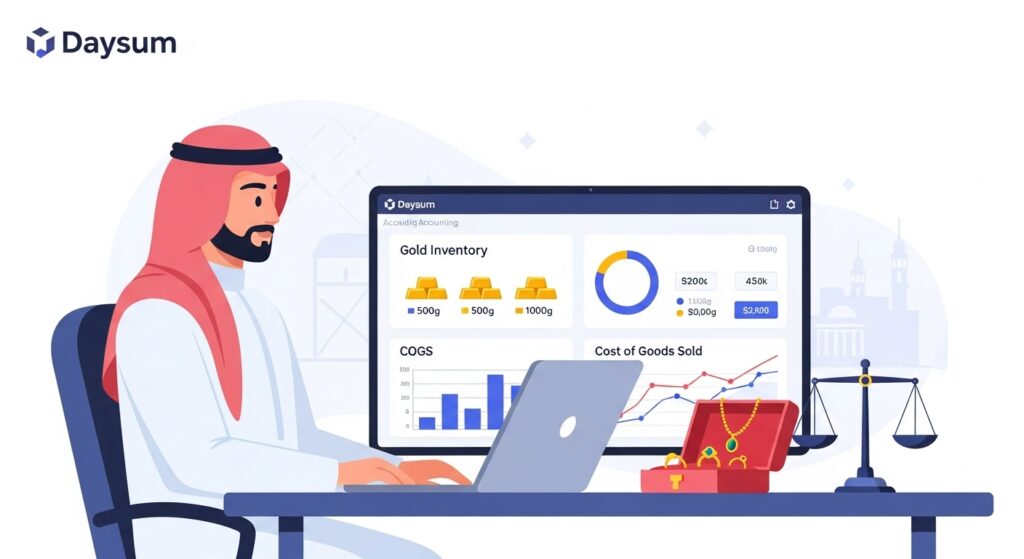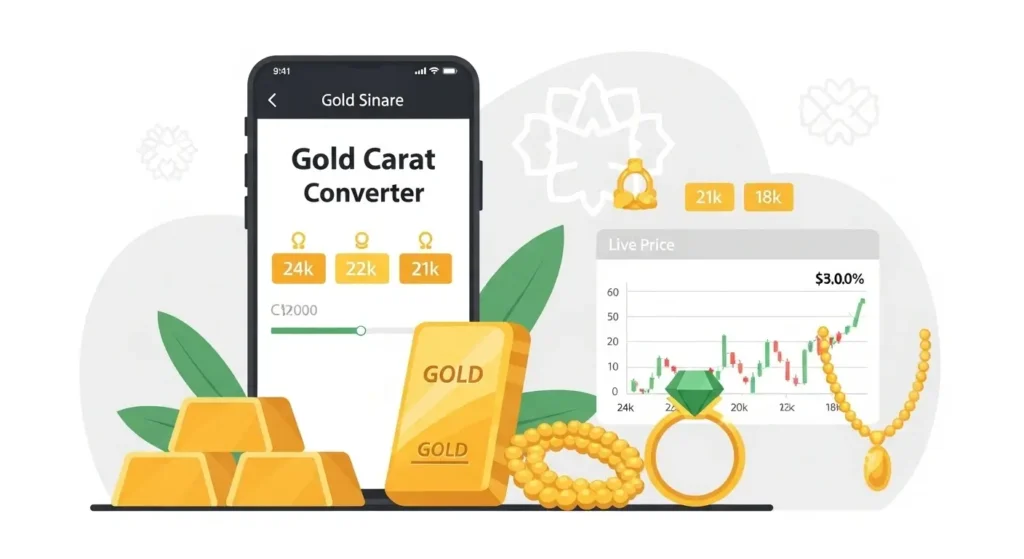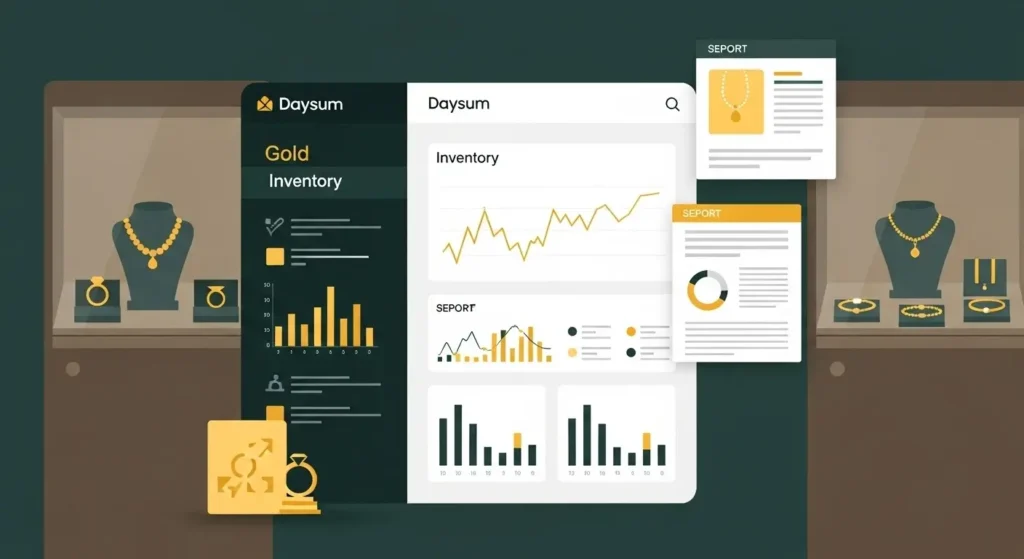
7 Common (and Costly) Mistakes to Avoid When Using a Gold Karat Calculator
In the gold and jewelry business, precision is not just a virtue; it’s the bedrock of your profitability. A single miscalculation, a misplaced decimal point, or a simple rounding error can cascade into thousands of riyals in losses. This is especially true in the complex, daily task of gold karat conversion. Whether you’re buying old gold from a customer, pricing new inventory, or valuing your stock, you are constantly converting between different purities: 24k, 22k, 21k, and 18k. To solve this, many jewelers rely on a Gold Karat Converter / Calculator, either a handheld device or a simple web app. These tools seem like a perfect solution, but they hide a dangerous secret: they are only as good as the data you put in, and the manual process of using them is riddled with potential for human error. This article exposes the seven most common and costly mistakes businesses make when using a gold karat calculator and reveals how to eliminate them permanently with an integrated system. First, Why is Karat Conversion So Critical? Before we dive into the mistakes, let’s establish why this calculation is the lifeblood of your business. A “Karat” (k) is a measure of gold purity out of 24 parts. Your business revolves around converting these purities into a single, standard value—the price of pure 24k gold. The Core Formula a Gold Karat Calculator Uses The math itself is simple. A calculator just automates this one formula: Pure Gold Weight = Total Item Weight × (Item Karat / 24) The calculator does this simple math. The mistakes happen in the human actions surrounding this formula. The 7 Costly Mistakes to Avoid Here are the most common errors we see businesses make every single day. Mistake #1: Confusing “Total Weight” with “Pure Gold Weight” This is the single most devastating blunder. An inexperienced salesperson weighs an 18k ring, sees “10g” on the scale, and applies the full 10g value to the customer’s trade-in. They have just paid for 10g of pure gold but only received 7.5g. This is an immediate 25% loss on the transaction. How to avoid it: This is a training issue. Staff must understand they are buying the pure gold content, not the total weight of the item. Mistake #2: Using the Wrong (or Old) Gold Price A calculator is useless if the price-per-gram you use is wrong. Gold prices fluctuate by the minute. Mistake #3: Forgetting to Deduct Gemstone Weight This is an incredibly common and costly error. A customer brings in a heavy 18k ring with a large (and often low-quality) stone. Mistake #4: Ignoring Non-Gold Components (Springs, Clasps, etc.) Similar to stones, many jewelry pieces contain non-gold parts to function. The most common are the tiny steel springs inside the clasps of necklaces and bracelets. Mistake #5: Relying on a Standalone, Disconnected Calculator This is the workflow error that re-introduces risk. Mistake #6: Using a Simple Converter for Complex Pricing When pricing your own inventory for sale, a simple karat converter is not enough. Mistake #7: Assuming the Karat is Correct A calculator is only as good as the numbers you feed it. The Problem: A Standalone Calculator vs. An Integrated System As you can see, the problem isn’t the math; it’s the manual human process around the math. The solution is to remove the human error. Feature Standalone Calculator (Web/Phone) Daysum Gold ERP System Data Entry Manual: Staff must type in weight, karat, and price. Integrated: Connects to the scale, pulls the live price automatically. Price Source Static: Relies on the user finding and typing in the correct price. Dynamic: Pulls the correct live “Buy” or “Sell” price feed instantly. Gemstone Deduction Manual: Relies on the salesperson remembering to do it. System Prompt: The workflow forces the user to enter a stone weight (even if it’s “0”). Security Very Low: High risk of typos and intentional fraud. No audit trail. Very High: All calculations are logged, automated, and tied to a user. No manual entry of final value. Accounting None: The calculation is disconnected from your books. Fully Integrated: The transaction posts directly to your inventory and accounting ledgers. The Ultimate Solution: Stop Calculating, Start Integrating A standalone Gold Karat Converter / Calculator is a band-aid. The permanent solution is a Gold Management System where the calculation is an invisible, automated, and 100% accurate part of your workflow. Here is the workflow in the Daysum Gold ERP System: There is zero manual calculation. Zero chance of a typo. Zero chance of using the wrong price. Zero chance of forgetting stones. The entire transaction is logged, secure, and 100% accurate. Frequently Asked Questions (FAQs) Q1: What’s the formula to convert 18k to 21k? You must convert through 24k (pure gold). Q2: Can I just trust the karat stamp on the jewelry? For most new, branded items, yes. But for old gold or scrap, it is always a best practice to test any high-value or suspicious items with an acid test or XRF scanner to verify the purity. A calculator assumes the karat you tell it is correct. Q3: How does your system get the live gold price? Our Daysum Gold ERP System integrates directly with official global and local live price feeds. This ensures your pricing is accurate to the second, protecting your margins on every single transaction. Q4: What about the alloys and other metals mixed in? That is exactly what the karat calculation is for. An 18k item is 18 parts gold and 6 parts other metals (alloys). The calculation (18 / 24) finds the value of only the 18 parts of gold and correctly ignores the 6 parts of less valuable alloy. Conclusion: Ditch the Calculator, Upgrade Your System A Gold Karat Converter / Calculator is a simple tool for a complex job. While it’s better than nothing, it leaves your business dangerously exposed to costly human errors, from simple typos to forgotten gemstone deductions. Stop risking your hard-earned profits on manual calculations. The solution is not







